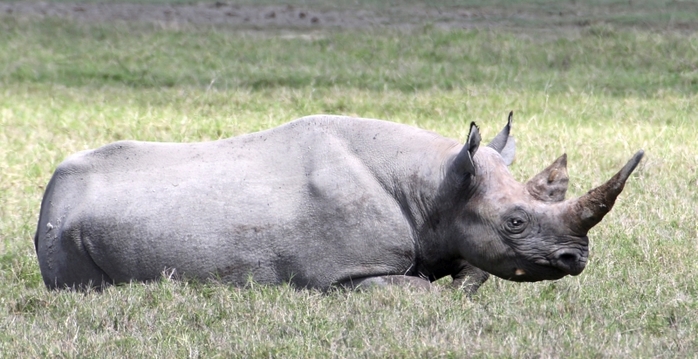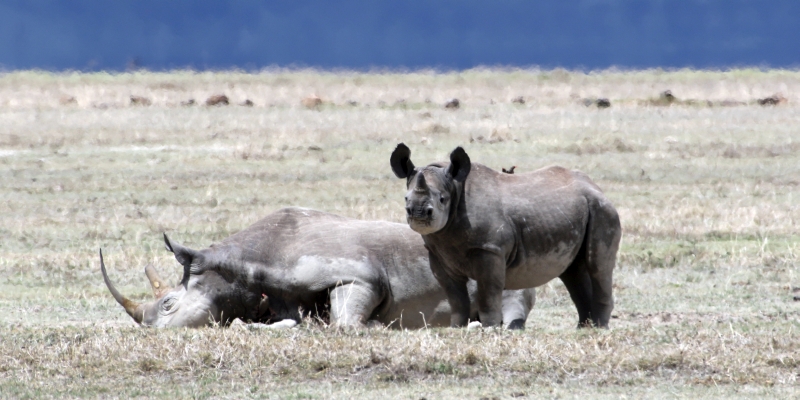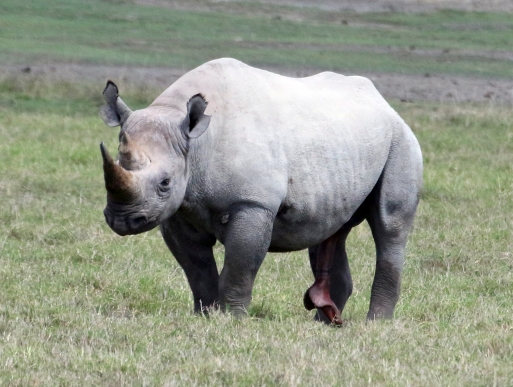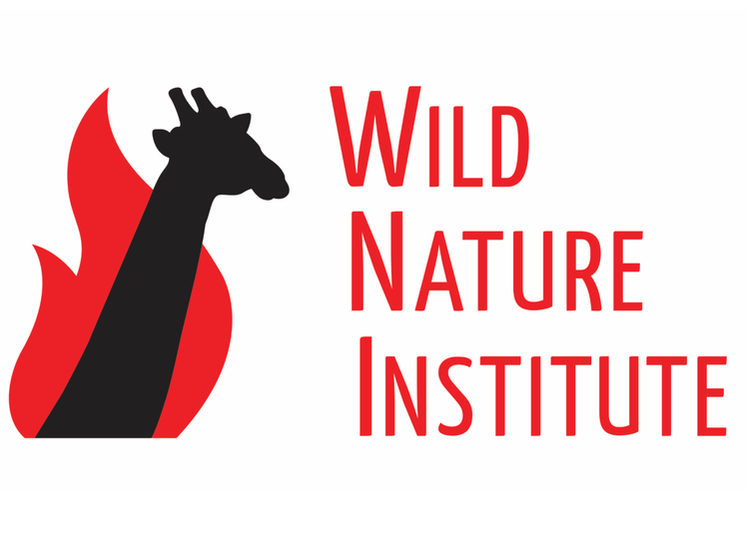|
Watching a rhinoceros is like stepping back in time 5 million years. These behemoths, like giraffes, elephants, and hippopotamuses, are some of the few remaining “megaherbivores,” plant-eaters that weigh more than a ton and were once common throughout the world. Today's megaherbivores are mostly restricted to Asia and, especially, Africa. Like all megafauna, rhinos live a long time (up to 35 years in the wild), have slow population growth rates, low adult mortality rates, and few natural predators capable of killing adults. Their slow reproductive rates make their populations vulnerable to human overexploitation. Millions of years ago, more than 30 genera of rhinoceroses were found throughout Eurasia, North America, and Africa, but only 5 species in 4 genera survived into modern times. All 5 species now teeter on the brink of extinction. As we reported in an earlier blog, the mass extinction of megaherbivores in North America during the Pleistocene epoch reduced soil and plant fertility. The modern-day extinction of rhinoceros could similarly damage ecosystems. Black rhinos—the only species in Tanzania—have two horns, which grow continually from the skin at their base like human fingernails. The front horn is longer than the rear horn, males tend to have thicker horns, and females usually have longer and thinner ones (see photos below). The horn is made of thousands of compressed hair-like strands of keratin (same material as hair and fingernails), making it extremely tough, but it can be broken or split during fighting. Uncontrolled poaching for horns, used in Yemen for ceremonial dagger handles and in Asia for traditional medicine, decimated the rhino population in Tanzania to only 32 in 1995. The species remains critically endangered. Black rhinos are most easily seen in the Ngorongoro Crater, especially during the rainier months. We saw 11 rhinos on a recent trip to the Crater, and caught a glimpse of one male’s impressive penis. According to veterinarian and rhinoceros expert Dr. Nan Schaffer, a fully erect rhinoceros penis extends up to two and a half feet and is shaped like a lightning bolt. To accommodate it, the reproductive tract of the female rhino is also quite long, with many twists and angles of its own. The penis is curved backwards, allowing the characteristic rear-directed urination. Urine spraying is a common form of scent marking, both for males marking their territory, and also for females to signify to nearby bulls when they are in estrus. Spraying bursts can reach up to 3-4 meters away and males often follow a spray with vigorous horning of the urine-soaked soil and vegetation. Scent-marking is critical for communication, as rhinos have extremely poor eyesight. One way to help protect and restore rhinoceroses is to financially support bold, effective, grassroots organizations working to stop the poaching crisis. The best group in Tanzania is PAMS Foundation. PAMS works tirelessly to ensure a future for megaherbivores like elephants, rhinos, giraffes, as well as other animals suffering from poaching.
1 Comment
Naturalist
5/15/2019 10:45:48 am
I may or may not have been researching the structure of rhino genitalia (out of purely academic interests of course) and ended finding this great article.
Reply
Your comment will be posted after it is approved.
Leave a Reply. |
Science News and Updates From the Field from Wild Nature Institute.
All Photos on This Blog are Available as Frame-worthy Prints to Thank Our Generous Donors.
Email Us for Details of this Offer. Archives
July 2024
|
|
Mailing Address:
Wild Nature Institute PO Box 44 Weaverville, NC 28787 Phone: +1 415 763 0348 Email: [email protected] |
|





 RSS Feed
RSS Feed
